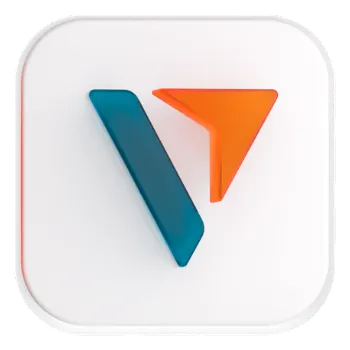Trading CFDs is one of the ways to participate in the capital markets by investing in different asset types. Here, we take an in-depth look into CFDs, how CFD trading work, and how you can trade them.
Key Points
- CFDs (Contracts for Difference) are derivative agreements that allow traders to speculate on the price movements of various assets, with returns or losses determined by the difference between opening and closing prices.
- CFD trading offers the flexibility to benefit from both rising and falling markets, includes leverage to enhance market exposure, and does not require ownership of the underlying asset.
- While CFDs have advantages like potential for high returns and access to a broad range of markets, they also carry risks such as amplified losses due to leverage and the possibility of accruing significant costs over time.
Why Trade CFDs
CFDs offer unique advantages, such as the ability to make potential returns from both rising and falling prices, leverage your position, hedging capabilities, and access to a wide range of markets through derivatives.
Trade Long or Short
CFDs offer the flexibility for traders to profit from both rising and falling markets. By going long, traders anticipate an increase in an asset’s price. Conversely, shorting allows traders to benefit from a decline in the asset’s price.
This dual approach enables investors to seize opportunities in varying market conditions, trading both bull and bear markets, making CFDs an attractive instrument for dynamic trading strategies.
Leverage
CFDs allow traders to access significant market exposure with a relatively small amount of capital through leverage. This means that even with a limited initial investment, traders can control a much larger position, amplifying potential returns.
However, it’s important to remember that while leverage can increase profits, it can also magnify losses, necessitating careful risk management.
Hedging
Traders can use CFDs as a hedging tool to protect their investment portfolios against potential losses. By opening a position that is opposite to an existing one, you can offset losses in one investment with gains in another.
For example, if you hold stocks that are expected to drop in value, you can also choose to short sell a CFD on those stocks, potentially covering any losses with the profits from the CFD trade.
Derivatives
As a derivative, CFDs derive their value from an underlying asset without the need for physical ownership. This characteristic not only simplifies the trading process by eliminating the complications of handling the actual assets but also broadens access to a wide range of markets including indices, commodities, and currencies.
Derivative trading through CFDs opens up a world of possibilities for investors looking to diversify their portfolios across different asset classes.
CFD Trading Costs and Considerations
Spread
All CFDs come with two quotes: The sell (bid) and buy (offer) prices. The bid price is the price at which you can short a CFD trading contracts. On the other hand, the offer price is what it costs to open a long CFD position.
The bid price is usually slightly lower than the market price of the underlying asset and the offer price is slightly higher.
The spread is the difference between these two prices [1].
Commissions
In most cases, the spread covers the cost of the trade. The only exception is stock/share CFDs where the sell and buy prices match the underlying market. Instead, you pay commissions to trade them. Commission rates vary across brokers but in most cases an average of about 0.1%.
That makes the experience of trading share CFDs as close as possible to actual share trading.
Swap Rates
Swap rates play a crucial role in CFD trading, representing the rollover interest applied to positions that remain open overnight. Essentially, they dictate the financial implications—whether costs or profits—of extending a currency pair trade beyond the close of the trading day.
How does CFD trading work?
CFD trading is a method of derivative trading that enables traders and investors to benefit from price movements without the need to own the underlying assets.
This form of trading is versatile and widely accessible, suitable for a broad array of markets. It allows traders to take positions based on both rising and falling market prices, offering the flexibility to buy (go long) in anticipation of market growth, or to sell (short sell) in expectation of market declines.
Here are some common types of CFDs available for trading:
- Commodity CFDs: These allow speculation on the price movements of various commodities, such as gold, silver, coffee, oil, and natural gas.
- Forex CFDs: Engage with the dynamic foreign exchange markets without the necessity of holding the physical currencies.
- Share CFDs: Trade the price movements of actual shares and equities in global markets.
- Index CFDs: Trade the overall movements of stock market indices without direct ownership of any index.
- Futures CFDs: Offer access to the price movements of futures contracts without requiring ownership of the actual futures contracts or the assets underlying these futures.
Getting Started with CFDs
To trade CFDs, you can follow these steps:
1. Open a Trading Account With a Broker of Your Choice
First, open a trading account with a broker of your choice. You can follow the procedure found on their website and you’ll be up and running in a few minutes.
Most brokers ask for your identification documents and proof of address to verify your account. Once verified, you can access all the full features of your trading account.
2. Fund Your Trading Account
There are multiple ways you can fund your account, depending on the funding options offered by your broker. You can even fund in currencies that are not your local currency, if you prefer. For example, one way is to connect your credit/debit card directly to your trading account to fund the account.
If you’re still unsure, you can open a demo account in a risk-free environment that lets you trade without loss.
3. Create a Trading Plan
A strategy is the backbone of successful trading activities. A trading plan helps you determine:
- Your trading window
- Your risk appetite
- Capital for opening leveraged positions
- Markets to trade
A trading plan helps you make calculated decisions that protect you from wiping out your account. With a plan, you make better decisions on your desired returns, acceptable loss, and risk mitigation strategies that protect your capital.
4. Download a CFD Trading Platform
Once your trading account is funded, the next step is to download the CFD trading platform of your broker.
These platforms are the main tools through which you’ll execute your trades, analyse market data, and manage your investment portfolio. Most brokers offer platforms that are compatible with various devices, including desktop computers, smartphones, and tablets, ensuring you can trade anytime, anywhere. The platform will also offer educational resources and analytical tools to help refine your trading strategies and make informed decisions.
Commonly used platforms include MetaTrader 4 (MT4) and MetaTrader 5 (MT5). You can also trade easily on your mobile with the Vantage App.
5. Open and Monitor Your First Position
Once you’ve chosen your markets, decide whether you want to go long or short. CFDs give you the opportunities to access both options.
There are several ways to monitor your position. Your broker can:
- Send you SMS messages
- Email alerts
- Push notifications
You can also monitor your positions directly from your trading platform.
6. Close Your First Position
Once your position moves in your favour, you can use the “close” button to exit the trade. You can also use this button to exit any losing trades and take an acceptable loss. To close a long position sells your CFD and closing a short position buys a CFD.
Your broker will deduct their fees from your return on investment or your capital if you incurred a loss.
Start Trading with Vantage
CFDs have become the go-to choice for many traders, particularly for the modern CFD trader who aims to hedge their portfolio position or requires access to limited capital. Engaging in CFD trading allows you to benefit from leveraged trading in volatile markets, minimal fees, and a broad range of asset classes, including forex pairs.
To navigate the buy and sell price fluctuations, you can go long or short depending on your strategy, and practise CFD trading across thousands of markets. However, be cautious of market risk and the potential pitfalls of leverage. If misused, leverage can lead to losses that exceed your initial capital. Therefore, it’s essential to have a thorough understanding of the market and develop a sound trading strategy to mitigate risks and maximise returns.
Frequently Asked Questions (FAQs)
What does CFD mean?
CFD stands for contract for difference, which is a financial derivative allowing traders to speculate on the rising or falling prices of fast-moving global financial markets, such as shares, indices, commodities, and currencies, without owning the underlying asset.
It is an agreement between a trader and a broker to exchange the difference in the value of a particular asset from the time the contract is opened to when it is closed.
Is CFD trading suitable for beginners?
CFD trading can be suitable for beginners, but it requires a solid understanding of the markets and risks involved. Beginners can choose to start with a demo account to gain experience without financial risk and invest time in educational courses offered by brokers before trading with CFDs.
Additionally, with access to educational resources such as the Vantage Academy and a cautious approach to learning trading strategies, beginners can gradually build their understanding and skills. It is important for new traders to thoroughly research and consider their risk tolerance before diving into CFD trading.
Is CFD better than stock?
Whether CFDs are better than stocks depends on a trader’s goals, risk tolerance, and trading strategy. CFDs offer leverage, the ability to go long or short, and access to multiple markets, which can be advantageous. However, trading with CFDs also carries a higher risk, especially due to leverage.
How much do you need to trade CFD?
Brokers such as Vantage provide trading accounts that enable traders to start with a small initial capital.
With a Vantage live account, you have the option to begin trading with a minimum deposit of USD$50. However, the specific amount required to trade CFDs will vary based on factors such as the type of products being traded, the leverage employed, and your personal risk tolerance.
How is CFD trading different from forex trading?
CFD trading and forex trading both involve speculation on price movements and the use of leverage. The key difference lies in the range of assets available for trading: CFDs cover a broad spectrum of underlying products including stocks, indices, commodities, and more, while forex trading is specifically focused on currency pairs.
Reference
- “Spreads in Finance: The Multiple Meanings in Trading Explained – Investopedia” https://www.investopedia.com/terms/s/spread.asp Accessed 10 April 2024



